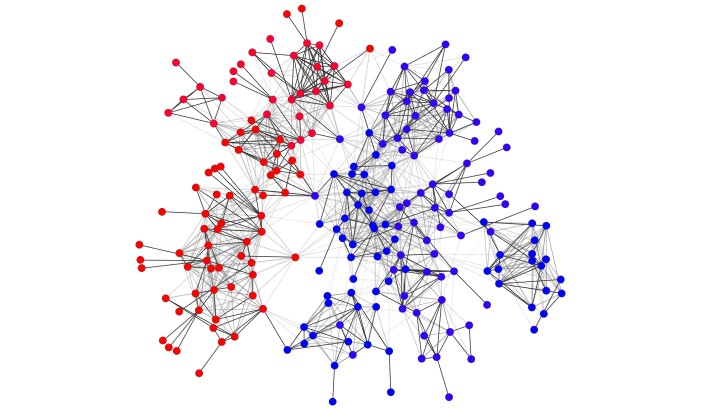The measurement of the social networks of migration

Migration creates complex webs of relationships between migrants in their place of residence and their relatives, friends and acquaintances living in their communities of origin and other places. Through these networks, ideas, information, services, money and goods circulate, which have a strong impact on future migrations, individual wellbeing, and the economies and politics of the involved communities. A new study conducted by researchers of the GRAFO research group and Pennsylvania State University systematizes the different methodologies that have been adopted to study this transnational reality and reviews their contributions.
The study, published recently in the International Migration Review, identified four methodologies based on network analysis, and described their substantive contributions.
The simplest approach, personal network analysis, asks migrants in a given country of residence to nominate the persons with whom they have social relationships, independently of the places of residence of the latter, and identifies the percentage and characteristics of the contacts who live in other countries, among other aspects. This body of research shows consistently that approximately a third of the contacts of migrants are transnational, regardless of migrants’ time of residence in their current places. It also shows how these networks evolve over the life cycle.
A second approach is conducted in the countries of origin, by means of household surveys that measure the relationships of household members with migrants in other countries. Occasionally, these surveys are binational when they include a second phase where the contacts nominated by households members are interviewed in the main country of destination. These studies have helped us to understand the relevance of different attributes in the decision to migrate.
With the aim to observe the simultaneity of actions taking place on both sides of the so-called “transnational social field”, the approach of simultaneously matched samples focuses on interviewing migrants in the country of residence and one or a few of their contacts in the place of origin, following these dyads or small sets of relationships over time. This methodology has shown how migrants are doubly engaged in the social and economic life of both their country of origin and that of residence, and how remittances flow in both directions. Furthermore, it shows the complex organization of care and education of the children of emigrants who have stayed in the country of origin.
The most complex methodology, known as “binational link-tracing”, aims to visualize the whole transnational social field. In this method, a few migrants in a given place of residence are invited to nominate their contacts from the same community of origin who live either in the same place of residence or in the place of origin, and they are included in the sample. These persons are again asked to nominate other members of the community and this process continues until the desired sample size is reached. In a first phase, only migrants in the place of residence are interviewed. Then, the research team goes to the place of origin and interviews the nominees who live there. Research that adopts this approach has shown that migrants and non-migrants form one large transnational community through which information and resources circulate, and that has a remarkable stability over time.
Each approach shows a different segment of the transnational social field, making them suitable for different levels of analysis (individual, household, relationship or community) and for different research budgets. For future investigations, the authors suggest integrating different methodologies and more attention for the temporal dynamics of these networks.
Miranda Lubbers1, Ashton Verdery2 and José Luis Molina1
1 Research group in fundamental and applied anthropology (GRAFO); Department of Social and Cultural Anthropology, UAB.
2 Department of Sociology and Criminology, Pennsylvania State University.
References
Lubbers, M. J., Verdery, A. M., & Molina, J. L. (2020). Social Networks and Transnational Social Fields: A Review of Quantitative and Mixed-Methods Approaches. International Migration Review, 54(1), 177–204. https://doi.org/10.1177/0197918318812343.


